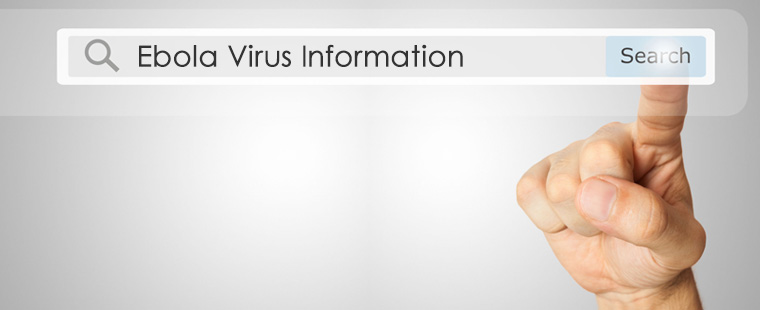Health care professionals are expected to be well informed about infectious diseases, including the chain of infection, prevention and treatment steps, methods of disinfection and decontamination, and the most current best practices. The recent news of two registered nurses in Dallas contracting the Ebola virus in the U.S. underscores the importance of all health care professionals maintaining their skill and knowledge of infection control practices.
A top priority for Barry University’s College of Nursing and Health Sciences is the safety of our community and patients, as well as the safety of our nursing and health science students and faculty. In response to the growing number of questions and concerns about the Ebola outbreak, and the desire of the faculty to be proactive and prepared, this set of guidelines and frequently asked questions (FAQs) has been prepared to guide you and your practice. This material is time-sensitive. Barry University’s commitment to life-long learning should guide our students and faculty as the current Ebola crisis continues to evolve.
Basic information about the Ebola virus:
According to the Centers for Disease Control and Prevention (“CDC”), Ebola is caused by an infection with a virus of the family Filoviridae, genus Ebolavirus. There are five identified Ebolavirus species. Four of the species have caused disease in humans. They are: Zaire ebolavirus; Sudan ebolavirus; Taï Forest ebolavirus, formerly Côte d’Ivoire ebolavirus; and Bundibugyo ebolavirus. The fifth, Reston ebolavirus, has caused disease in nonhuman primates (monkeys, gorillas, and chimpanzees), but not in humans. Ebola was previously known as Ebola hemorrhagic fever.
Source: http://www.cdc.gov/vhf/ebola/pdf/ebola-factsheet.pdf
According to the World health Organization (“WHO”), the directing and coordinating authority for health within the United Nations system, the Ebola virus causes an acute, serious illness which is often fatal if untreated. Ebola virus disease (EVD) first appeared in 1976 in 2 simultaneous outbreaks, one in Nzara, Sudan, and the other in Yambuku, Democratic Republic of Congo. The latter occurred in a village near the Ebola River, from which the disease takes its name. The current outbreak in west Africa, (first cases notified in March 2014), is the largest and most complex Ebola outbreak since the Ebola virus was first discovered in 1976. The most severely affected countries are Guinea, Sierra Leone and Liberia in West Africa.
Source: http://www.who.int/mediacentre/factsheets/fs103/en/
Ebola is spread through direct contact (through broken skin or through your eyes, nose, or mouth) with
- Blood and body fluids (like urine, feces, saliva, vomit, sweat, and semen) of a person who is sick with Ebola.
- Objects (like needles) that have been contaminated with the blood or body fluids of a person sick with Ebola.
Ebola is not spread through the air, water, or food. A person infected with Ebola cannot spread the disease until symptoms appear. The time from exposure to when signs or symptoms of the disease appear (the incubation period) is 2 to 21 days, but the average time is 8 to 10 days. Signs of Ebola include fever (higher than 101.5 F) and symptoms like severe headache, muscle pain, vomiting, diarrhea, stomach pain, or unexplained bleeding or bruising.
Source: http://www.cdc.gov/vhf/ebola/pdf/what-need-to-know-ebola.pdf
What if a patient with confirmed Ebola, or at high risk for the virus, presents in clinical?
Every patient deserves high quality care and compassion. As an undergraduate or graduate student, defer to the experienced expert clinicians at the facility to provide direct care to the patient. Restrict your learning activities to observation and providing indirect support. Strictly adhere to universal precautions in all patient care situations.
What do I do if I come in contact with a known/potential Ebola patient?
Call for immediate assistance from your assigned preceptor, clinical staff member, instructor, or the unit manager. Follow the institution’s exposure policies and procedures. Notify your program director at the University.
What are the measures recommended to the general public to protect themselves against Ebola?
The CDC recommends the following protective measures:
- Wash your hands often with soap and water or use an alcohol-based hand sanitizer.
- Do NOT touch the blood or body fluids (like urine, feces, saliva, vomit, sweat, and semen) of people who are sick.
- Do NOT handle items that may have come in contact with a sick person’s blood or body fluids, like clothes, bedding, needles, or medical equipment.
- Do NOT touch the body of someone who has died of Ebola.
- Avoid nonessential travel to Guinea, Liberia, and Sierra Leone (a Warning, Level 3 travel notice for U.S. citizens is in effect). CDC has downgraded the travel notice for Nigeria to a Watch, Level 1 because of the decreased risk of Ebola in Nigeria. Travelers to Nigeria should practice usual precautions. CDC has also issued an Alert, Level 2 travel notice for the Democratic Republic of the Congo (DRC).
Sources:
- http://www.cdc.gov/vhf/ebola/pdf/what-need-to-know-ebola.pdf
- http://www.cdc.gov/vhf/ebola/outbreaks/2014-west-africa/qa.html
What are the recommendations for U.S. health care providers and the use of personal protective equipment (PPE)?
The CDC, on October 20, 2014, published specific guidelines for U.S. health care providers caring for patients with Ebola. The guidelines are centered on three principles:
- All health care providers should undergo rigorous training and practice, and be competent with PPE, including taking it on and off in a systemic manner.
- No skin should be exposed when PPE is worn.
- All workers should be supervised by a trained monitor who watches each worker taking PPE on and off.
Source:
http://www.cdc.gov/media/releases/2014/fs1020-ebola-personal-protective-equipment.html
What resources provide the best available current information about Ebola?
For the best current available evidence, please visit the following websites:
- http://www.cdc.gov/
- http://www.who.int/en/
- http://www.nursingworld.org/Ebola-Information
- http://www.ama-assn.org/ama/pub/physician-resources/public-health/ebola-resource-center.page
- http://www.asm.org/index.php/news-room/asm-press-releases/98-policy/issues/93198-ebola-10-14
- http://www.aacn.nche.edu/news/articles/2014/ebola-resources
- http://www.aacn.org/wd/volunteers/content/ebola-virus-resources.pcms?menu=aboutus
- http://www.aana.com/resources2/professionalpractice/Pages/Ebola-Virus-Disease.aspx
- http://www.cdc.gov/vhf/ebola/hcp/monitoring-and-movement-of-persons-with-exposure.html

